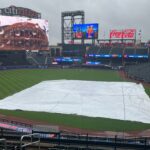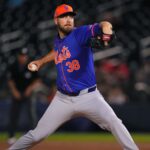In the 2021-22 offseason, one of the hottest topics surrounding the New York Mets was “Should they trade Jeff McNeil?” The Mets chose not to and were rewarded with a batting title in a rebound season. McNeil earned a four-year, $50 million extension for his efforts.
Fast forward five months, and that deal looks completely different. McNeil has been lost at the plate. He has an overall slash line of .259/.334/.332 (87 OPS+). In June, he nearly hit a new low, slashing .196/.267/.283 (.550 OPS). That is the second-lowest OPS he’s posted in any month of his career in which he had at least 40 plate appearances. The only worse month was August 2021 when he had a .534 OPS.
McNeil has always had unusual career splits as one of the league’s few remaining contact hitters. Therefore, parsing out what, exactly, is going on with him is difficult. He’s never been one to barrel the ball a lot or put up strong exit velocities.
Still, let’s try to answer this question: what is going on with the Squirrel, likely the Mets’ best pure hitter heading into the season? Why is he struggling so mightily, and is there anything he can do to correct it?
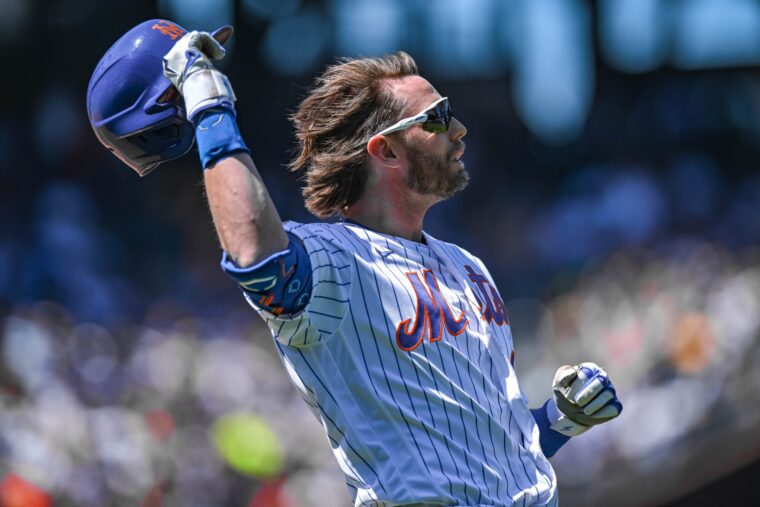 Jeff McNeil, Mets
Jeff McNeil, Mets
The Problems
There are specific statistical differences in McNeil’s profile that point to why his outcomes are far below his usual standard. Finding the root of those issues is more difficult, but let’s go with the results first and then work backward.
He’s Popping Up
McNeil has a 10.6 percent popup rate this season, per Baseball Savant, the highest of his career. Although he came close at 10.2 percent in 2018, he’s never been above 7.9 percent in any of his other seasons. Last year, McNeil popped up just 5.9 percent of the time. A groundball/line drive hitter like McNeil cannot afford to pop up.
McNeil’s popup rate is one of the worst among qualified hitters in baseball, ranking in the 13th percentile out of 151 batters. In 2022, he was in the 67th percentile in that category. The popups are killing his game.
Correspondingly, McNeil has a low sweet-spot rate, defined as a ball with a launch angle between eight and 32 degrees (which is optimal for hitters). His 31.6 percent rate is the second-lowest of his career and in the 23rd percentile among hitters, compared to his career-high 39 percent in 2022 (93rd percentile).
Even though McNeil has always hit many groundballs, he previously got on the sweet spot often enough to be a strong hitter. Those hits have turned into popups and balls hit straight into the ground in 2023.
He’s Pulling Ineffectively
McNeil is pulling the ball more often this season at 37.2 percent vs. 33.3 percent in 2022. That may be a conscious choice due to the shift ban. However, his results on the pull side are miserable.
- Pull-side BABIP: .214
- Straightaway BABIP: .302
- Opposite-field BABIP: .333
McNeil hit .353 to the pull side in 2022. What’s particularly strange is that pull-hitting lefties have mostly seen a large increase in their BABIP on the pull side.
"Lefties have seen their BABIP on pulled groundballs and pulled line drives increase by 40 points and 33 points"
Clearly, the bargain of the last offseason was pull-hitting lefties with line drive swings. https://t.co/zIBw8s137N
— Shane Goldmacher (@ShaneGoldmacher) July 11, 2023
The pull side is where a hitter’s power often comes, so this may correspond with McNeil’s low slugging percentage. In 2022, 16.8 percent of McNeil’s batted balls to the pull side resulted in an extra-base hit; in 2023, that’s down to just 7.08 percent.
This runs counter to the idea that McNeil is struggling because of the shift ban. If anything, his struggles have been to the side where the shift ban should help the most. His groundball rate in that direction is very similar to what it was in 2022—60.2 percent vs. 60.5 percent—so, at least in theory, he should be reaping the benefits. However, he’s hitting .162 on groundballs to the pull side compared to .267 in 2022.
The biggest difference to the pull side is McNeil’s line drive rate, which is down from 27.5 percent in 2022 to 21.2 percent in 2023. His BABIP on pulled line drives is also 110 points lower, from .652 in 2022 to .542 in 2023.
Ironically, McNeil’s average pull-side line drive is a lot harder in 2023 than it was a year ago. His average exit velocity on those batted balls is 95.0 mph, compared to 90.8 mph in 2022. However, he has just a 12.5 percent extra-base hit rate on pull-side line drives, compared to 28.3 percent in 2022.
He Can’t Hit Four-Seam Fastballs or Sliders
Like most major league hitters, McNeil faces four-seam fastballs more often than any other pitch. Per Baseball Savant, he has faced four-seamers 37.8 percent of the time, which is significantly higher than his 32.9 percent mark from 2022. However, compared to his .294/.395/.434 (.829 OPS, 149 wRC+) against them last year, McNeil is hitting just .212/.308/.308 (.616 OPS) vs. four-seam fastballs in 2023, per FanGraphs. His 84 wRC+ against four-seamers is the worst of his career.
Against sliders, McNeil hit .298/.362/.415 (.777 OPS, 131 wRC+) in 2022, but he’s down to just .192/.295/.288 (.584 OPS, 76 OPS+) in 2023. This is a little less noteworthy only because he had even worse numbers against sliders in 2020 and 2021. However, combining that with the four-seamer means that the average pitcher has two different avenues with which to successfully attack McNeil.
His Groundball BABIP is Way Down
Per Statcast data, McNeil’s groundball rates are 41.3 percent (2022) and 42.2 percent (2023). The biggest difference is his BABIP results: .335 vs. .237. This applies especially to the pull side despite the shift ban. His pull-side groundball BABIP is .162 in 2023 compared to .250 in 2022. This is even though he hit 28.9 percent of his pull-side groundballs into the shift last year.
McNeil’s decreased groundball results are far more detrimental to his BABIP than his increased popup rate. He has hit 4.7 percent more popups in 2023 than in 2022. Even if all of those popups became line drives (on which he has a .603 BABIP), McNeil’s overall BABIP would improve from .282 to .300. Meanwhile, if his groundball BABIP improved even halfway to its 2022 level at .286, his overall BABIP would increase to .322. If he hit as well on groundballs this season at .335, his overall BABIP would be .342, not too far off from his .353 level in 2022.
McNeil is also getting far worse results on fly balls (.018 BABIP vs. .083), but he doesn’t hit nearly as many of them. His line drive results haven’t been quite as good, either (.603 BABIP vs. .629), but the difference doesn’t impact his BABIP as much. It’s his groundballs that have been killing him the most. Why are his results so much worse on groundballs in 2023 than in 2022?
Perhaps this is just luck. After all, BABIP is considered a fluky stat. Unlike line-drive BABIP, which is generally high across baseball, groundballs do not usually produce a .335 BABIP. In fact, McNeil’s xBA on those balls was actually .235. If he had fulfilled his xBA on groundballs, McNeil’s overall BABIP would have been .304 instead of .353.
Maybe McNeil is simply regressing to the mean on his groundballs.
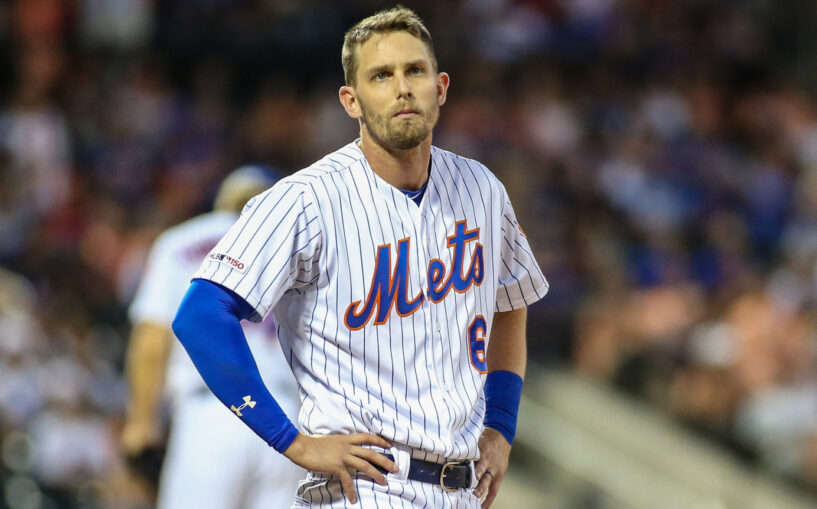
2021: Same or Different?
Before this season, McNeil’s outlier poor year was 2021. After hitting .319 over his first 918 career at-bats from 2018-20, he suddenly experienced a dramatic decline. Here is a comparison between his numbers from 2021 and the first half of 2023.
- McNeil 2021: .251/.319/.360 (.679 OPS), .257 xBA, .387 xSLG, .301 wOBA (.315 xwOBA), 92 wRC+, .280 BABIP, 1.3 fWAR
- McNeil 2023: .253/.331/.328 (.659 OPS), .249 xBA, .332 xSLG, .298 wOBA (.299 xwOBA), 91 wRC+, .282 BABIP, 0.8 fWAR
The raw numbers are eerily similar besides a stark decline in SLG and xSLG. Is this season’s funk coming from the same place as 2021’s?
However, when you dig deeper into the numbers, there are some differences. McNeil had a far lower line drive rate in 2021 (22.8 percent) than this season (27.7 percent). Since line drives generally have the highest BABIP, that naturally led to worse results. Even though his rate is still lower in 2023 than it was in 2022, it’s not nearly as sharp a difference.
Furthermore, McNeil got some help from the shift in 2021. His wOBA without the shift was .274 compared to .344 with it, per Baseball Savant. In 2023, his overall (shiftless) wOBA is .299.
(Again, it’s hard to say that the shift ban is causing McNeil’s struggles since his 2023 wOBA is 57 points lower than his shiftless wOBA in 2022.)
Injury?
In 2021, McNeil missed a month with a strained hamstring. The injury significantly hampered him all season. Even in 2022, McNeil missed five games in late June with hamstring tightness. He then proceeded to hit .208/.274/.299 (.573 OPS) in 21 July games.
Did McNeil get injured sometime at the beginning of May this season? He was hitting .304/.418/.441 (.859 OPS) through 29 games, but his OPS has been in a tailspin ever since. Although he did not report an issue until the end of May, perhaps there is a longer-term injury that he is keeping quiet. The groin injury reported on May 27 may not have actually started then.
If McNeil does have some sort of ailment, it would behoove him to sit rather than continue to battle. There is no way to know for certain if this is the case, and the ultra-competitive McNeil would never admit it. Still, we cannot rule it out as a possible cause.
If Not Injury, Then What?
It’s hard for me to buy that it’s simply BABIP luck that’s causing McNeil to hit poorly in 2023. After all, the fact that his slugging percentage is down from .454 to .328 is a product of more than just groundball BABIP.
I do believe that McNeil’s pull tendency is not helping him this season. His BABIP is so poor on the pull side (.214) that he should likely switch his approach back toward straightaway and opposite-field hitting. Incidentally, he has a slightly higher rate of extra-base hits to the opposite field (7.94 percent of his opposite-field balls in play) than to the pull side (7.14 percent).
Both McNeil’s struggles against four-seam fastballs and sliders and his increased popup rate point to a hole in his swing. Though this is not my area of expertise, it is noteworthy that 15.8 percent of McNeil’s batted balls against fastballs and 19.4 percent against sliders have been popups. In 2022, those figures were 5.6 percent and 4.48 percent, respectively. The plane of his swing seems to be particularly off on those pitches. Therefore, it makes sense that McNeil has been seeing a steady diet of four-seamers.
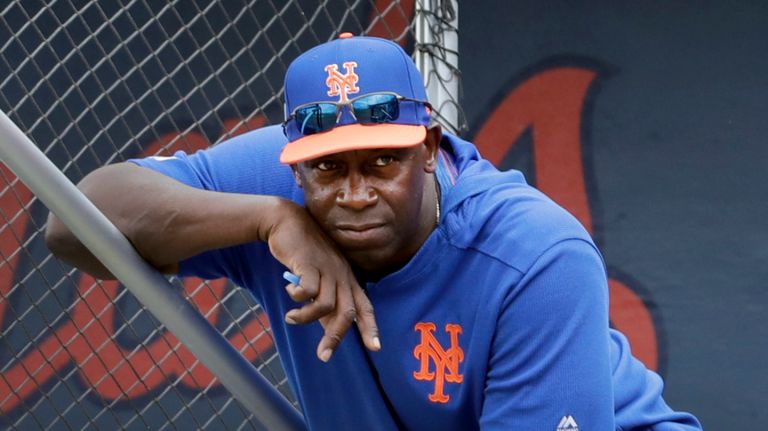
Who Can Help?
In 2021, many Mets players complained about the firing of Chili Davis in favor of Hugh Quattlebaum. They felt that the team’s analytics department was overloading the players with information about the pitchers instead of just letting them hit.
Considering that we’ve seen the rigidity of the Mets’ current analytics department with regard to handedness vs. actual performance, it wouldn’t be surprising to hear that this is still going on. The fact that five separate hitters in the Mets’ lineup are hitting significantly below their 2022 numbers and their career norms makes you wonder about who’s coaching them. Although Eric Chávez didn’t suddenly stop advising the hitters in his role as bench coach, something seems to be going wrong with a hitter like McNeil stuck in a rut for such a prolonged period of time.
I’m not generally a proponent of firing coaches just for the sake of firing them. In this case, though, whatever Jeremy Barnes is doing with the hitters doesn’t seem to be working.
Mets’ Roster Construction
Furthermore, I see a bigger issue with the Mets’ roster, not just the specific hitters who are slumping. In 2022, they built a roster that emphasized hitting to all fields, a more old-school approach, with Chávez as the backbone behind it. In 2023, though, they decided to try to emphasize launch angle more, all while retaining the same players who thrive on an all-fields approach.
As a team, the Mets actually have a higher average exit velocity (89.6 mph vs. 88.2), hard-hit rate (41.0 percent vs. 37.1), and more home runs per game (1.27 vs. 1.05) than they did in 2022. However, it’s done them no good, as they’re averaging nearly a quarter of a run less per game (4.50 vs. 4.73) and are far worse in virtually every other offensive category. Taking non-power hitters and trying to foist a power approach upon them is distinctly unhelpful.
In fact, that could be why McNeil is popping the ball up more. His average launch angle is a bit higher in 2023 (13.9 degrees vs. 12.8), as is his hard-hit rate (31.6 percent vs. 30.2). Still, all his other numbers are down.
Interestingly, when you look at the Baseball Savant pages of Mark Canha, Starling Marte, and Daniel Vogelbach, you find similar numbers: higher rates of hard hits in various ways (some combination of exit velocity, launch angle, hard-hit rate, and fly-ball rate), but worse results. The only hitter who has seen comparable results with a higher exit velocity and launch angle is Brandon Nimmo, who has hit more home runs this season without horribly sacrificing his other offensive numbers.
Power vs. OBP
I think another problem is that the Mets are trying to have their cake and eat it too. They are still stuck on the old-school Moneyball approach of on-base percentage, which they interpret to mean high walk rates and low strikeout rates. However, they also want their hitters to increase their power.
What does that mean? The hitters are stuck between a rock and a hard place: they’re trying to avoid strikeouts while also trying to launch the ball. Very few hitters can do both. As a result, they’re swinging less, which leads to unfavorable hitters’ counts. They’re overthinking, which leads to the lowest meatball swing rate in baseball.
McNeil has always been a low-strikeout, low-walk player. He’s a contact hitter. This year, he still has low strikeout rates, but the power isn’t there, either. I suspect it’s the hitting approach.
Bottom Line
McNeil’s struggles this season are almost inconceivable given how well he hit last year. It seems to me that he has put more of an emphasis on power, leading to a higher pull rate and better hard-hit rates, but more popups and fewer batted balls to the straightaway and opposite fields. If he returns back to the hit-first approach rather than trying to drive the ball, he is most likely to break out of his funk.
There is not much the Mets can do at this point about their roster construction. What they can do is stop trying to hit home runs all the time and get back to the basics of last season. They’re trying to fit a square peg in a round hole, and it’s most notable with McNeil. Let him get back to being the Squirrel.





